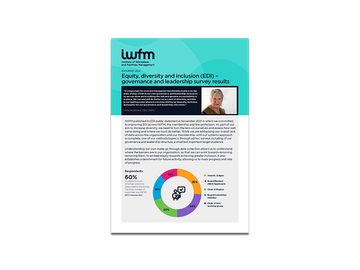Explore

IWFM and Equans join forces to supercharge WFM’s sustainability opportunity
On Earth Day 2024, IWFM entered into a partnership with Equans to leverage the huge potential of the workplace and facilities management (WFM) sector to enhance sustainability across organisations.
Through an initial two-year collaboration, IWFM will incorporate Equans’ expertise in thought leadership, insight and guidance to support the profession in this mission. Together the partners will engage IWFM’s membership and wider audiences in the sustainability conversation and educate stakeholders on the purpose, actions and potential of sustainability, challenging on the ‘what’ the ‘why’ and ways to do better. Planned initiatives include:
- Sustainability Survey Reports 2024 and 2025
- Sustainability Guidance
- The 2024 Sustainability Survey
Building on the 2023 Sustainability Survey findings and exciting evidence from our 2024 Market Outlook survey report, which discovered that carbon solutions were the fastest growth investment category, we’re seeking out our community’s insight into decarbonisation. The survey has once again benefitted from the expertise of IWFM’s Sustainability SIG, which has been strengthened by Equans’ sustainability team members. Take the survey today and share it among your WFM practitioner contacts in the UK and Ireland. This survey is part of a two-year sustainability partnership with Equans with to aim to empower workplace and facilities management professionals to drive change across the net zero agenda. The Sustainability Survey leads to actionable insight, that will be supported by wider tools to help our members make the changes needed to achieve net zero.
- Webinars
Upskill with IWFM Academy’s sustainability courses
IWFM have partnered with IEMA, the global body for environment and sustainability professionals, to deliver courses specifically for workplace and facilities management professionals.
View all new courses here or check out upcoming dates below:
Introduction
Welcome to IWFM’s sustainability hub, where you will find a range of research, insight, guidance, inspiration, resources, and more, to help our profession play its role in tackling crucial societal issues and the global climate crisis.
We will continue to expand this hub’s content in collaboration with members of our Sustainability SIG and other industry experts, so please bookmark it and check back regularly.
Expand to continue reading
Sustainability, and sustainable development, is the understanding and integration of actions focused on environmental protection, the preservation of natural resources and the positive interaction these have with economic and societal development.
Across the world, changes are taking place in society and the environment. This process started with the Industrial Revolution and has been accelerating since the 1950s to such an extent that it could alter the world forever. Over a decade ago, Sir John Beddington, Chief Scientific Adviser to the UK Government, described the coming together of these global trends as ‘the perfect storm’. Sustainability is focused on understanding these interconnected ‘megatrends’ and improving the world, either by reversing the trends or mitigating them, so that the ‘storm’ never happens.
Sustainability has long been an integral consideration for our profession, never more so than now with the global climate crisis and coronavirus pandemic. As the lynchpin in organisations, marrying the needs of owners, occupiers and supply chains to create productive and happy workplaces, workplace and facilities management professionals are uniquely placed to make a difference in reducing greenhouse gas emissions and achieving a more sustainable future.
Furthermore, by tackling sustainability issues, our profession can also help to make the world a better place for our children, grandchildren and their descendants; a net zero world that is fit to live in and where natural resources are used sustainably.
Business as usual is no longer an option. The opportunity is there for our profession to raise the bar on current best practice so that it becomes the normal of tomorrow, to show leadership and to unlock the sustainability opportunity of every workplace.
Our Sustainability SIG can help to support FM teams in reducing carbon in their own operations and in the facilities in which they work. To find out more about the strategies your organisation can adopt, please get in touch.
Events, useful links and further reading
Beyond operational carbon: the importance of embodied carbon
IWFM webinar: Raising FM’s value through accurate emissions measurements
IWFM webinar: Sustainability – what needs to change?
IWFM webinar: Sustainability evolution or revolution with Inenco
IWFM webinar: Sustainability - today's landscape and how to create change with Inenco
IWFM webinar: The opportunities from a sustainable digital built environment
IWFM webinar: Sustainability, COP26 and its impact on the workplace in Ireland
IWFM webinar: ‘Hygiene and sustainability in workplace washrooms’ with Dyson
News item: Making the case for ‘the lynchpin profession’ during COP26 (November 2021)
News item: No more hot air - an IWFM reflection on sustainability issues (December 2021)
News item: Greener workplaces: the big opportunity for workplace and facilities management professionals (June 2021)
News item: IWFM partners with The Climate Group to promote sustainability in business (May 2020)
Article: The Times, Raconteur, ‘The future workplace’: article by Chris Moriarty, IWFM’s former Director of Insight and Engagement (March 2020)
News item: Twenty-five built environment professional bodies jointly pledge to tackle climate change (March 2020)
The Royal Society (video): Climate change in 60 seconds
TED (video): Michael Green on how we can make the world a better place
TED (video): Christiana Figueres on how we can solve the climate crisis
TED (video): Pen Hadow on the role of business in ecological research
Decarbonisation and net zero
Net Zero for FM
Net zero is the term commonly used to describe a neutral balance between the greenhouse gases (GHGs) produced and the amount removed from the atmosphere. This state is also referred to as carbon neutral.
Governments around the world have made commitments to be net zero by specific deadlines:
- England and Wales by 2050
- Scotland by 2045 (and 75% by 2030)
In addition, companies and organisations have set their targets to achieve net zero by specific deadlines and are also looking to their supply chains to follow this lead.
Expand to continue reading
How does it affect our profession?
With around 40% of global carbon emissions, and 25% of total UK carbon emissions, attributed to the built environment, facilities management has a key role to play within organisations to positively influence GHG emissions and help achieve net zero ambitions. As the people responsible for support services and the operation of buildings, workplace and facilities managers can influence the decisions which determine carbon dioxide emissions from services and built assets. This can be done through the choice of suppliers, i.e. those who offer zero/low carbon products and services, and through the maintenance or replacement of components to reduce carbon emissions.
In new facilities, embodied carbon in construction materials must be considered along with the carbon generated throughout the lifetime of plant, fixtures and fittings. Facilities managers can provide valuable input at the early stages of a project on the likely operational carbon emissions and how these might be mitigated over an asset’s lifecycle.
Most new facilities also have to achieve high standards of environmental performance. FM professionals are ideally placed to monitor and benchmark this throughout the asset’s operations, using building management systems (BMS), IoT and sensors to track actual versus predicted outcomes and identify ways to resolve any issues.
However, it’s not just about the carbon produced by facilities, it’s also about reducing the carbon footprint of everyone’s daily activities. Measures which can readily be introduced include adopting electric and hydrogen fleet vehicles and committing to maximising power, fuel and heat from renewable or non-polluting resources, such as heat pumps.
FMs can play a huge role in reducing the emissions created by their supply chain. According to the International Energy Agency (IEA), Scope 3 emissions account for 70% of organisations’ CO2 emissions. The lack of an industry-wide Scope 3 Framework has been a major barrier to driving down carbon emissions. Such a framework is important for several reasons: to drive down emissions, to create a level playing field for the sector and to show the world, through the data collected, the importance of the operation phase and its considerable impact on climate change.
For that reason, IWFM has been supporting the SFMI Scope 3 Framework tool. Working with FM providers Skanska, Bouygues, Optima, and founding partner BAM, and in consultation with IWFM, the SFMI has used real-life examples to produce a framework of methodologies for measuring and reporting Scope 3 emissions, which will become mandatory for most companies by 2025.
Background and context
It is widely recognised that climate change is being triggered by higher levels of GHGs in the atmosphere. Their name derives from the greenhouse effect they create by warming the Earth’s surface and the air above it. The most common GHGs are carbon dioxide and methane.
Carbon dioxide is the most dangerous and abundant GHG, which is why cutting carbon emissions or seeking low-carbon alternatives can limit climate change.
To achieve net zero we need to consider:
- Reducing the emissions we are sending into the atmosphere from building operations, transport, etc.
- Removing GHG emissions from the atmosphere through the use of carbon capture technologies and offsetting, in the short-term. Offsetting is always a last resort and great care should be taken to choose a credible scheme.
- Around the world, governments and energy companies are generating more energy from renewable sources such as wind and solar. Customers (behind the meter) are also able to generate and store energy for their own consumption or export to the grid, thereby contributing to a net zero overall position.
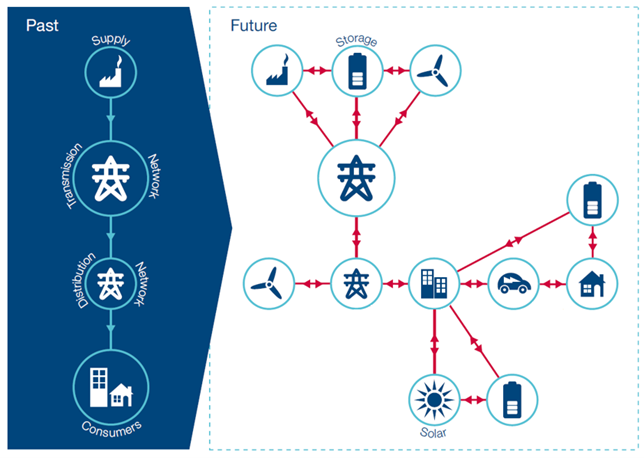
(Adjusted) The changing roles of networks Decarbonisation, decentralisation and digitisation are transforming the GB electricity system – National Grid
Legislation, policy and standards (UK and global)
Since the Kyoto Protocol was adopted in 1997 (ratified in 2005), the international community - made up of the 192 signatories - committed to limit and reduce GHG emissions in accordance with agreed individual targets.
The UK has been a leader in the introduction of legislation, passing The Climate Change Act 2008, which committed the UK to an 100% reduction in carbon emissions (relative to 1990 levels), to be achieved by 2050.
The Act introduced a carbon unit, a carbon unit limit, a carbon budget, a monitoring and reporting system, and a carbon trading scheme. In essence, this is a system of control and penalty, or taxation, imposed on all businesses in the UK. So, whilst the Government committed to a voluntary international treaty, it enshrined these voluntary commitments into law in order to force compliance.
The Government’s Industrial Decarbonisation Strategy (published in March 2021) laid out its ambition to create a competitive, low-carbon future for the UK's manufacturing and construction sectors. At the same time it published details of projects set to benefit from the Public Sector Decarbonisation Scheme, which provides grants for public sector bodies in England to reduce carbon emissions in hospitals, schools and council buildings through funding of low carbon heating systems and energy efficiency measures.
At the same time, the former Department for Business, Energy & Industrial Strategy (BEIS) launched a public consultation on introducing a national policy framework for rating the energy and carbon performance of large commercial and industrial buildings above 1,000m² in England and Wales, with annual ratings and mandatory disclosure as the first step. Government estimates that the scheme could reduce the annual business energy bills of the 10,000 buildings in scope (these account for 53% of the total energy used by commercial and industrial buildings and the associated carbon emissions) by £116m by 2030.
From 2019 to 2021, the Government ran a series of consultations on the minimum energy efficiency standards (MEES) for different sectors of the built environment. After the consultations, it was announced that a new Minimum Energy Efficiency of Buildings Bill was going to be run through both houses of parliament. The Bill looks to raise the EPC ratings for buildings by target years. The Bill is still in the process of being reviewed, after having its first reading in the House of Commons in March 2023. There is currently no deadline as to when the Bill will be implemented, however, we are expecting more updates on the Bill when Parliament is back in session in September.
In October 2021 the Government finally released its Net Zero and Heat and Buildings strategies, which outline how the UK will decarbonise over the next 30 years, including the cutting of carbon emissions from the 30 million homes and workplaces which are responsible for almost a third of our total emissions. Although light on detail about the built environment’s path to net zero, the documents consolidate the Government’s responses to the scale of the climate change challenge and the economic transformation required to meet net zero by 2050. Many of these have previously been published over recent months - and covered in IWFM articles - such as the Prime Minister’s 10 Point Plan and the Energy White Paper.
In terms of decarbonising the built environment, the key commitments in the £3.9 billion net zero plans are:
- all new heating appliances in homes and workplaces to be low carbon from 2035 (with a ban on new gas boilers from 2025)
- a £60 million heat pump programme targeting 600,000 installations a year by 2028 and making heat pumps as cheap as gas boilers by 2030, with £5,000 grants to help 90,000 households install heat pumps up until 2028.
- £1 billion allocated to the Public Sector Decarbonisation Scheme for buildings such as schools and hospitals
- £800 million to fund the Social Housing Decarbonisation Scheme and £950 million for Home Upgrade Grants
- £338 million to develop the Heat Network Transformation Programme and the introduction of heat network zones in England by 2025 requiring buildings to connect to their local heat network
- investing in hydrogen production with a decision on the role of hydrogen in the heating system by 2026
- rebalancing green energy levies and obligations from electricity to gas, in part to make heat pumps cheaper.
Best practice, insight, guidance and resources
Examples of net zero best practice can be found at:
- Government Property Agency: Net Zero and Sustainability, Design Guide – Net Zero Annex
- National Audit Office: Achieving net zero
- UK Green Building Council: Advancing Net Zero
- Supply Chain Sustainability School
- Science Based Targets: The Corporate Net-Zero Standard
United Nations Sustainable Development Goals
Net zero is directly related to the UN’s Sustainable Development Goal 13: ‘Take urgent action to combat climate change and its impacts’.
Governance, metrics and KPIs
Consistent metrics and KPIs for the measurement and disclosure of GHG emissions are still to be determined.
Good governance requires top-level corporate responsibility for tacking climate change and how the responsibility is assigned. Financial reporting should acknowledge climate change as a potential financial risk and disclose the materiality of that risk.
Decarbonising the built environment – the role of smart tech
Buildings account for 39% of global emissions, but renovation rates are still far too slow to meet the Paris Agreement goals.
The International Energy Agency (IEA) estimates that energy efficiency improvements can deliver over 40% of the greenhouse gas emissions reductions needed to meet global climate goals by 2040
While smart tech alone is not the panacea to maximising our efficiency and achieving net zero buildings, it can play a vital role in helping us to reach our decarbonisation goals, and in enabling safe, healthy and productive workplaces. Using smart tech to gather data on how a building is being used and operated helps to ensure building system optimisation and other benefits, such as intelligence-led equipment maintenance.
Improving millions of buildings will create hundreds of thousands of green collar jobs, helping us rebuild economically after the COVID-19 pandemic.
What’s more, smart energy measures often come with rapid rates of return on investment and significant financial reward for businesses. Advances in smart technologies and digitalisation are providing ways to lower energy bills, reduce risk, and improve operational productivity.
Think of an average office at night with all the lights left on - it's such a waste. Occupancy sensors allow you to use only those that are really needed, and this can be linked to the heating, ventilation and air conditioning (HVAC) systems too.
Smart tech is needed now more than ever as we try to get back to work safely after the pandemic. For example, using a smart LED lighting system, sensors give information to building managers that can help to maintain safe occupancy levels, and also help employees to find available desks and meeting rooms through a smartphone app.
Not only do we owe it to the environment to take action, it is also imperative for the physical and mental wellness of everyone in them. Workplaces are where we spend a huge amount of our time and we now know that energy efficient, well-lit buildings with good indoor air quality are key to healthy and productive workers. There are also wider social benefits from improved air quality and healthier indoor environments, and less strain put on public health services.
The growing number of EP100 member companies and signatories of the Net Zero Carbon Buildings commitment are showing that it's a sensible path. With less than 10 years left to halve global emissions in the Climate Decade, it’s vital that companies everywhere get on board.
Events, useful links and further reading
Toolkit: What to consider when developing a holistic net zero strategy
IWFM Webinar: ‘Scope 3 Building a Greenhouse Gas Inventory’ with the IWFM Sustainability SIG
IWFM Webinar: Scope 3 developing a greenhouse gas roadmap and target with IWFM Sustainability SIG
IWFM webinar: Sustainability trends in FM: carbon and net zero, circular economy, and wellbeing
IWFM webinar: Navigating a changing energy landscape in the transition to net zero with Bryt Energy
News item: Carbon Zero action: IWFM signs up to CIC plan for professional institutions (June 2021)
Resource: Sustainability Survey 2022 – Carbon and Net Zero
Resource: Smart Tech Factsheet (May 2021)
Report: Navigating a changing energy landscape in the transition to net zero
Resource and waste management
Circularity and the circular economy
Sustainability has long been an integral consideration for our profession, never more so than now with the global climate crisis and coronavirus pandemic. An increasingly important dimension of this is circularity and circular economy, which seeks to utilise resources for as long as possible and then repurpose them.
The principles of the waste hierarchy have been long established, but only go so far in providing longer-term solutions to the use of resources for a sustainable, inclusive future.
The circular economy is a strategic and practical approach that transforms the way we design, make and consume products, resulting in the considerable reduction of carbon extracted and emitted through wasteful behaviour. It is an essential strategy to help address the climate emergency alongside considerations around energy reduction and renewable resources.
Expand to continue reading
The UNEP Circularity Platform provides a broad set of principles in relation to circular economy, with value-retention as the key to the process throughout the cycle. These include:
- Reducing the amount or items used
- Remanufacturing items to be “restored to same-as-new” or better and used
- Repurposing goods to provide another function
You can read more about the full list of principles by the UN Circularity Platform here.
According to the Ellen MacArthur Foundation: ‘A circular economy aims to redefine growth, focusing on positive society-wide benefits. It entails gradually decoupling economic activity from the consumption of finite resources and designing waste out of the system. Underpinned by a transition to renewable energy sources, the circular model builds economic, natural, and social capital. It is based on three principles:
- Design out waste and pollution
- Keep products and materials in use
- Regenerate natural systems.
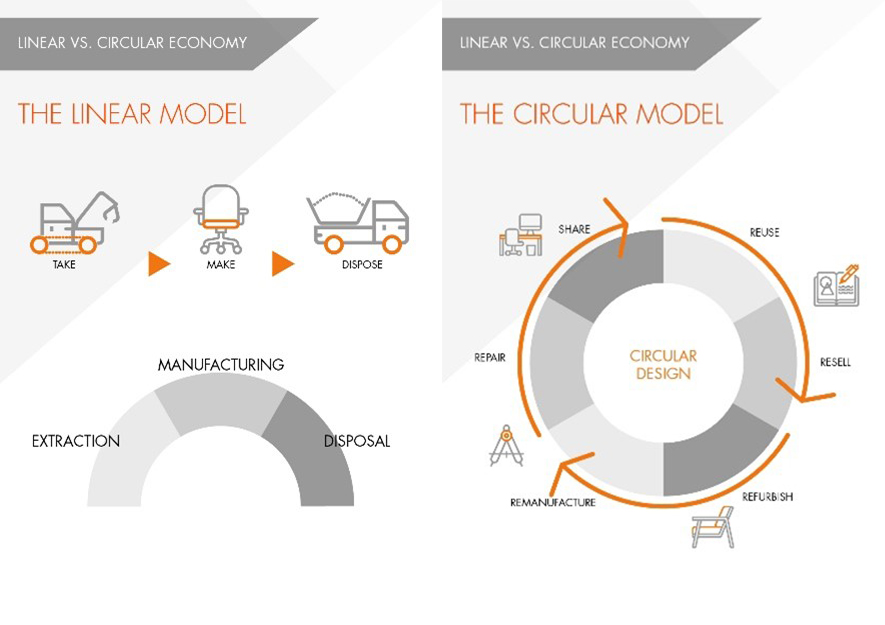
How does it affect our profession?
The circular economy is centred around designing out waste and pollution, keeping resources in use for as long as possible, making savings in embodied carbon and cost, and regenerating our natural systems. For the workplace, the message is to use less, share more, and make sure that what you do use has been sourced sustainably and has the potential to be reused, repurposed, or recycled, rather than simply becoming waste.
The FM role is influential in many areas of business operation and by engaging in circular economy thinking, FM can help contribute to an organisation’s sustainability or net zero ambitions. Organisations seeking a net zero target and measuring their Scope 3 emissions (those of their value chain) will need to consider the impacts of their supply chain. By engaging in circular business models focused on reuse, repair, refurbishment, redistribution, sharing and servitisation, FMs will be critical in reducing an organisation’s carbon impact.
There is no ‘one size fits all’ when it comes to the circular workplace, but there are quick gains to be made reducing the embodied carbon of office assets and consumables.
By identifying the areas where you could most benefit from efficiencies, it’s easy to introduce circular principles into your existing workplace and procurement, whilst planning bigger future changes. With many organisations now reconfiguring their workspaces or relocating, this is an ideal time to explore opportunities to adopt circular principles in various aspects of the workplace:
- What purchases are you planning in the short to mid-term e.g. furniture, IT, consumables? Is there scope to make your choices more ‘circular’? Could you buy refurbished rather than new furniture, refillable natural cleaning products, or recyclable (rather than disposable) batteries?
- What are you throwing away? Reviewing this on a regular basis will enable you to see if some of this waste can be eliminated, saved, reused or repurposed. Can a chair have its missing arm or caster replaced? Can an old laptop be securely wiped and reconditioned for use by a school or charity? Can excess food from a canteen be shared locally?
- What are your business needs? Could you share resources with other organisations also in need or lease for the short term? Do you need to own them?
- Can you set up an internal reuse system with an organisation such as Globechain, and share and reuse assets across your teams or offer them for reuse externally?
- Is there scope to reduce the consumption of materials through more thoughtful business practices? Consider partial replacement rather than complete renewal of carpet or ceiling tiles. Can you buy better quality that will last longer, or can be sold on or donated when you no longer need it?
Background and context
We have a climate emergency with evidence of the impact of climate change being seen through increasingly frequent global environmental crises. It is estimated that climate change caused 15 events in 2019 that each cost more than $1bn in damage, with the majority costing more than $10bn each. Floods, storms, droughts and wildfires struck every inhabited continent in 2019 and have continued to cause damage, with 2022 becoming the warmest year on record for the UK.
To date, much of the effort to tackle the climate crisis has focused on a transition to renewable energy and the implementation of energy efficiency measures. Whilst these are both crucial if we are to meet net zero targets, they only address an estimated 55% of our global emissions. The remaining estimated 45% comes from the embodied carbon in the products we already use every day.
The Ellen MacArthur Foundation’s 2019 report Completing the Picture, How the Circular Economy Tackles Climate Change noted: ‘A circular economy offers a positive way forward by redefining value creation to focus on society-wide benefits. It addresses the shortcomings of the current system, while creating new opportunities for businesses and society. But above all, circular economy principles present unique opportunities to help tackle the climate crisis through significantly reducing emissions by designing out waste; preserving the embodied energy of products and materials; and increasing carbon sequestration through the regeneration of natural systems.’
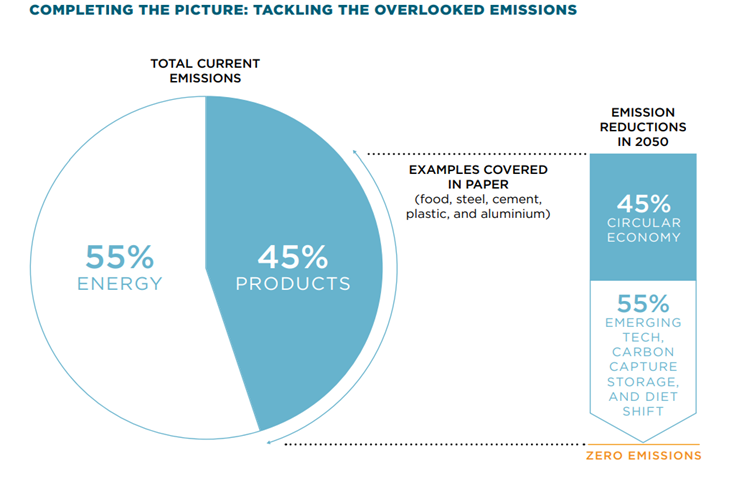
Legislation, policy and standards (UK and global)
The European Commission adopted the new circular economy action plan (CEAP) in March 2020. From this action plan a global alliance has been developed to identify knowledge and governance gaps in advancing a global circular economy. Actions and timetable can be found here.
The UK Government has transposed this legislation and produced a Circular Economy Package Policy Statement in July 2020 showing a commitment to the principles of CEAP and how it is addressed in existing UK environmental directives and what future action will be taken.
Defra produced a Waste Prevention Programme for England: towards a resource efficient economy in March 2021 which engages with circular economy themes. Wales unveiled their Beyond Recycling strategy in March 2021 and Scotland launched their strategy “Making Things Last” in 2016.
In line with its ambition to eliminate avoidable plastic waste by 2042, Defra has also published plans to ban commonly littered single-use plastic items which are not already covered by existing policies. The proposals would apply to plastic plates (plus bowls and trays), cutlery and balloon sticks, and expanded and extruded polystyrene drinks containers - which together total more than 20 billion items used annually - from October 2023 in England. Wales has also announced a ban on single-use plastics coming into effect in October 2023, and Scotland became the first part of the UK to implement a ban in June 2022. Northern Ireland’s decision regarding a ban is still in progress.
In January 2022 Defra opened a consultation on introducing a new digital tracking system for controlled waste (both non-hazardous and hazardous), extractive waste, and any waste containing Persistent Organic Pollutants (as used in thermal insultation, pesticides, etc) that is moved, transferred, or treated on site.
IWFM will be tracking the progress of all government consultations and legislation in order to update members on the key measures and implications for our profession.
Best practice, insight, guidance and resources
Examples of relevant circular economy guidance and insights include:
- UKGBC: Circular economy implementation guidance
- Zero Waste Scotland: what is the circular economy
- Crown Workspace: adopting the circular economy in your workplace
- WRAP: the circular economy
- Ellen MacArthur Foundation: circular economy case studies
- Business in the Community: the circular office guide
UN Sustainable Development Goals
The circular economy is directly related to the following United Nations Sustainable Development Goals (UN SDGs), as well as feeding into many of the other targets:
- Goal 11: Sustainable Cities and Communities
- Goal 12: Responsible Production and Consumption
- Goal 13: Climate Action
- Goal 15: Life on Land
Governance, metrics and KPIs
There are emerging metrics on the circular economy, with some measurements on greenhouse gas emissions, waste savings, and supply chain savings available through DEFRA and WRAP.
Events, useful links and further reading
Resource: UNEP Circularity Platform
IWFM Good Practice Guide: Recycling, waste and resource management (updated February 2022)
IWFM Webinar: ‘Scope 3 Building a Greenhouse Gas Inventory’ with the IWFM Sustainability SIG
IWFM Webinar: Scope 3 developing a greenhouse gas roadmap and target with IWFM Sustainability SIG
Resource: Sustainability survey 2022 – Circular economy
News item: Government waste and resource management strategy adds to developing sustainability agenda (February 2019)
Ellen MacArthur Foundation (video): explaining the circular economy and how society can re-think progress
Ellen MacArthur Foundation: visualising the circular economy
The environment
Workplace and facilities managers have significant influence over aspects of the external environment and humans’ effects on it. Additionally, they are on the frontline of adaptation to, and management of, its impacts.
Examples of areas where FMs can provide substantial value to this area include:
Air quality
There are many different definitions of air quality, all of which primarily concern the measures to which air can be assessed as clean or polluted - and carbon dioxide and greenhouse gases are not the only considerations. Broadening the definition can also capture the extent to which that air is suitable and/or clean enough for the eco-systems affected by it to remain healthy and the longer-term possible effects that air could have on the wider environment.
Expand to continue reading
The presence or amount of substances in the atmosphere/localised air that can cause damage to the climate and the environment or be harmful to the health of people and/or other living organism, is termed ‘air pollution’. These pollutants can include:
- particulates and dusts - both organic and inorganic and at a range of sizes that may allow them to be inhaled and respired (for example, PM10 and PM 2.5)
- spores, bacteria, viruses and other biological material
- gases (for example, carbon monoxide, oxides of nitrogen and sulphur, chlorofluorocarbons, and methane).
Air quality and air pollution are factors in internal environments, such as houses, workplaces and schools (indoor air quality or IAQ) as well as outside (ambient air quality).
How does it affect our profession?
FM is responsible for sourcing, managing and delivering many of the services in our workplaces which have a direct effect on ambient as well as indoor air quality.
From vehicle emissions, boilers or other plant and equipment (refrigeration, fire and evaporative cooling) and the power we use (the impact of generation), to internal ventilation, chemicals for cleaning and other processes; all can have an effect on air quality, both positively and negatively.
By understanding these impacts and sourcing, specifying, operating and managing our buildings more effectively we can help optimise both the direct and indirect effects of air pollution and the risks associated with it.
Background and context
In the UK the Clean Air Act was introduced in 1956 principally in response to London’s smogs. Due to concerns over the depletion of the Earth’s ozone layer in the 1980s, a worldwide environmental treaty - the Montreal Protocol - was introduced, bringing in a phased ban on the production and use of ozone-depleting substances. However, these are only part of the story.
Because humans, for the most part, cannot see air or the contaminants within it, its quality can be invisible to us. This air pollution, however, is a significant health concern, with the World Health Organisation (WHO) reporting that:
- an estimated 4.2 million premature deaths globally are linked to ambient air pollution.
Worldwide ambient air pollution accounts for:- 29% of all deaths and disease from lung cancer
- 24% of all deaths from stroke
- 25% of all deaths and disease from ischaemic heart disease
- 43% of all deaths and disease from chronic obstructive pulmonary disease
- pollutants with the strongest evidence for public health concern, include particulate matter (PM), ozone (O3), nitrogen dioxide (NO2) and sulphur dioxide (SO2).
More recently, concerns over asthma associated with ambient air pollution in the local environment have also come to the fore and added further focus on the need for greater control/management.
All these factors, coupled with greater public health awareness and understanding, are and will continue to see increased scrutiny of air quality/pollution as an issue and one that need to be addressed.
Legislation, policy and standards
Worldwide, many countries have already introduced initiatives, agreements and processes to help manage, mitigate and reduce the effects of air pollution. These range from broad controls to targeted interventions against specific compounds and chemicals (i.e. SO2, oxides of nitrogen and PM).
Globally, controls of carbon, greenhouse gas (GHG) emissions and ozone-depleting substances have been long established. On a national and local level, strategies around clean air, for example the US Clean Air Act, the National Clean Air Agreement in Australia and the UK Clean Air Strategy 2019, set aims and targets for improving air quality and tackling air pollution.
Other initiatives, both long established and developing, include:
- The United Nations Economic Commission for Europe (UNECE) Convention on Long-range Transboundary Air Pollution (1979)
- The WHO Global Platform on Air Quality and Health: a collaboration of nearly 50 international/regional agencies and research institutions, ‘to strengthen capacity for air quality monitoring worldwide and assessment and reporting of related health impacts in a transparent and harmonized way’
- Clean Air Asia and Clean Air Africa: international NGOs with a ‘global mission for better air quality and healthier, more liveable cities’
As well as ambient air pollution, indoor air quality has also been a focus, with the EU-derived Workplace Health Safety and Welfare Regulations (1992), Regulation 6 Ventilation, the Control of Substances Hazardous to Health (COSHH) (2002) (and EH/40 - Workplace Exposure Limits) and the Building Regulations 2013 (as amended), Part F Ventilation, in the UK, covering aspects of ventilation and air quality. Equally, through the COVID-19 pandemic air quality and ventilation have been major themes and it is unlikely that these will go away any time soon.
Best practice, insight, guidance and resources
Understanding your national, local and organisational requirements must be the best first step in assessing your air quality/managing air pollution.
Most governments, NGOs and other bodies publish (mainly) freely available information, insights, guidance and best practice. This information covers GHG emissions and ambient air quality as well as applicable standards for IAQ. Air quality index information, published daily, is now also readily available for many cities and other locations around the world.
Setting your own policies, objectives and targets provides further commitment to and measurable targets against which you can monitor your progress and success.
One useful guidance piece for FMs in this area is CIRIA’s ‘Environmental good practice in facilities management’ guide.
UN Sustainable Development Goals
Although it doesn’t feature as a standalone topic, air quality is intrinsic to a number of the 169 targets described in the United Nations Sustainable Development Goals (UN SDGs), including:
- Goal 3: Good Health and Well-Being - target 3.9 is ‘By 2030, substantially reduce the number of deaths and illnesses from hazardous chemicals and air, water and soil pollution and contamination’
- Goal 11: Sustainable Cities and Communities - target 11.6 is ‘By 2030, reduce the adverse per capita environmental impact of cities, including by paying special attention to air quality and municipal and other waste management’
- Goal 12: Responsible Consumption and Production - target 12.4 is ‘By 2020, achieve the environmentally sound management of chemicals and all wastes throughout their lifecycle, in accordance with agreed international frameworks, and significantly reduce their release to air, water and soil in order to minimize their adverse impacts on human health and the environment’.
Air quality also impacts on a number of other UN SDGs, both directly and indirectly: the encouragement for research, implementing strategies and the greater adoption of clean and environmentally sound technologies and industrial processes will see benefits environmentally socially and individually.
Governance, metrics and KPIs
There is a myriad of metrics, KPIs, legislation and governance in place for air quality/pollutants, depending on your location and type of industry.
Carbon emissions have been very highly covered for a long time, although the mechanisms for driving change and reduction are varied; with carbon footprint management and cap and trade schemes just two examples.
Equally, fluorinated greenhouse gases (F gases) (i.e. hydrofluorocarbons (HFCs), perfluorocarbons (PFCs) and sulphur hexafluoride (SF6)), also have legislation in place covering their production, usage and disposal. As a consequence, procedures for recording their volumes and usage are relatively well developed.
Other pollutants that have an environmental as well as a public health concern include particulate matter (PM), ozone (O3), nitrogen dioxide (NO2) and sulphur dioxide (SO2) has seen specific targeting of them with thresholds set for both ambient and indoor air quality. However, these can and do vary between jurisdictions. Some of this targeting has had a profound effect, such as the 98% reduction in sulphur dioxide emissions (from 1970 levels) in the UK (Defra).
Setting your own applicable targets for air quality based on verifiable and accurate baselines (and your legal requirements, of course) is a good means of demonstrating your commitment not just to the environment, but to also your local community and staff.
Biodiversity
Legislation, policy and standards
In January 2022 a Defra consultation set out proposals to mandate biodiversity net gains for built environment developments aimed at securing measurably better habitats for wildlife and creating better places for local communities.
Through provisions in the forthcoming Environment Act, the Government plans to establish a consistent set of requirements (to be brought in from late 2023) covering the ongoing management, monitoring, reporting and enforcement of biodiversity net gains for developments for a minimum period of 30 years. Government is also considering how to make this monitoring information publicly accessible with a transparent biodiversity gain register with the help of a consultation which ran in 2022.
IWFM will be tracking the progress of this and other government consultations and legislation in order to update members on the key measures and implications for our profession.
Events, useful links and further reading
TED (video): Johan Rockström on letting the environment guide our development
TED (video): Tony Juniper discusses loss of biodiversity and the impact on commercial businesses
UN Environment Programme (video): Why do we need to change our food system?
University of Plymouth (video): What is water security
Social Value
Social value is the quantification of the relative importance that people place on the changes they experience in their lives. Whilst these things make a real difference to people’s lives, they are not commonly expressed or measured in the same way that financial value is. Examples of social value might include awarding contracts to local suppliers, donating to public realm projects, providing staff to volunteer for good causes, hiring apprentices, or giving prisoners work experience for a second chance at life.
Expand to continue reading
How does it affect our profession?
Today’s business leaders increasingly look beyond an organisation’s financial bottom line, demanding greater scrutiny and transparency of its approach to social value. FM providers are more frequently being asked by clients, in both public and private sectors, to deliver social value as part of their contractual performance and impact. Equally, they have their own genuine desire to operate as modern, socially responsible businesses.
Since 2016 our Sustainability Surveys have highlighted this trend, identifying a move away from the tick-box culture towards the importance of longer-term environmental and social impacts, and to move the provision of FM services from a cost-based focus to one based on value.
Social Value helps to articulate and highlight how the workplace and FM professionals add value and deliver impact beyond the management of the building and workspace, especially in relation to community engagement and corporate social responsibilities. For the workplace and FM professional this represents a massive opportunity to redefine the profession’s image and establish a more value-based approach to delivering services.
Our Sustainability Surveys identified two key barriers to driving forward social value: a lack of a common definition and a standard set of financial and non-financial metrics that could be used as a benchmark.
Therefore, in 2019 IWFM began a collaboration with The Social Value Portal and the National Social Value Taskforce to develop an FM-specific measurement framework - the National TOMs Facilities Management Plug In (NT FM Plug-In).
Background and context
The NT FM Plug-In has grown out of the National TOMs, which have been used widely across the UK since their launch in 2017. Regularly updated, they are open sourced under a creative commons licence and have been downloaded more than 4,000 times across all sectors. The National TOMs have become one of the most used methodologies for measuring social value in the UK and have been endorsed by the Local Government Association and are compatible for use with the recently issued Cabinet Office Procurement Policy Note 06/20 for contracts awarded by Central Government.
The National TOMs also includes a family of sector-specific ‘plug-ins’, including the FM Plug-In. In addition, the TOMs have been mapped against the Global Goals for Sustainable Development, allowing organisations to report their contribution to a wider global agenda.
National TOMs Facilities Management Plug-In: framework, guidance and support
The NT FM Plug-In aims to unlock social value measurement and management in the facilities management sector and its development has been supported by FM experts from across the sector. It has been specifically designed to support the procurement and contract management process, helping organisations to measure and maximise the social value they create through the delivery of their core services, as well as the additional social value being unlocked as a part of a contract. Importantly, it will also allow organisations to report value created as a financial contribution to society.
Because the TOMs include financial valuations of each proposed activity, they allow buyers to assess not only the quality of a social value offer, but also the quantitative value.
Key benefits include:
- learning from three years’ development and feedback from users
- provides a consistent measurement solution
- creates a level playing field for business
- allows benchmarking
- it’s mapped against the Future Generations Goals.
The collaboration between IWFM, The Social Value Portal and the National Social Value Taskforce has delivered a series of tools to support the FM Plug-in:
Guidance
Split into three parts, this describes the philosophy behind the Plug-In to help organisations apply it and achieve greater reported value. It also includes the full FM Plug-In measure set, the overarching rationale behind each measure and proxy value as well as how each measure should be used to set targets through a Social Value Action Plan, for procurement, measurement and benefits realisation.
Part 1: an overview and introduction to using the FM Plug-In, including what it is intended for and how it will be maintained and managed over time.
Part 2: a detailed description of how to use and apply the FM Plug-In for procurement or measurement, alongside guidance on collecting evidence for contract management and reporting.
Part 3: a full description of the FM Plug-In including proxy values, rationales and detailed descriptions.
The calculator
The FM Plug-In is fully integrated into the existing National TOMs calculator which includes a procurement and measurement calculator, as well as stakeholder engagement resources that can be used to inform prioritisation at procurement and attribution at measurement.
Development
In order to support the continuous development of the National TOMs framework, the Social Value Portal is seeking feedback from organisations on their priorities, challenges and views on driving the social value movement forward. The survey can be found here.
Best practice, insight, guidance and resources
In response to calls from the profession for a dedicated FM-specific procurement tool that meets our sector’s diverse needs, IWFM and NEC developed the NEC4 Facilities Management Contract (FMC), a suite of contracts with supporting user guidance, which provides more integrated and consistent strategies for the procurement of FM services. Read more on the FMC - with exclusive discounts for IWFM members - here.
Together with NEC we are producing a series of practice notes to address important region and sector specific issues and provide guidance for practitioners and clients on how they can be adjusted and reflected in the FMC contract.
The practice note on including social value in the FMC sets out the principles and purpose of social value and does so using the TOMs methodology, on which the IWFM and Social Value Portal have collaborated in the past to create a dedicated FM Plug In. The IWFM is currently reviewing the dynamic framework which was created for this, to identify the most appropriate way to provide ongoing advice for the sector. In the meantime, the practice note mentioned above can still be used for guidance while we look into the updates. It also explains how the social value requirements would be incorporated into the Scope and Performance Table in an NEC FM contract. Read more on the social value practice note here.
Events, useful links and further reading
IWFM webinar: Social value the new National TOMs FM Plug In framework
News item: Social value in FM can unlock £billions and help achieve net zero targets
Guidance: Government Commercial Function – The Social Value Model
Legislation: Public Services (Social Value) Act 2012
Best practice: Social Mobility Pledge
Article: Guy Battle, CEO of Social Value Portal, on social value (March 2019)
Health, safety, and wellbeing
Wellbeing is a balance of physical and mental health, a fulfilment of the professional and personal goals.
For many businesses, the costs of staff outweigh other running costs within the organisation: in office-based companies, staff costs could be as much as 90% of the total. It is, therefore, perhaps surprising that we have only comparatively recently begun to look at the impact of the workplace on staff performance.
Expand to continue reading
Only in the last ten years has the concept of workers’ wellbeing become understood. Employees with improved physical and mental health increase productivity and engagement, and lower absenteeism. Good wellbeing can also have monetary benefits such as reduced recruitment costs. Companies are increasingly looking at wellbeing as a means of improving their performance. This has opened up a whole spectrum of design and operational standards encompassing ventilation and air quality, furniture and carpet off-gassing, catering and indoor planting – all aimed at supporting and organisations and their facilities teams.
The role for the FM is to explore how to implement these measures, both through projects as they occur and through service contracts, and then measure their impacts on indicators such as sickness rates.
Wellbeing programmes should be a two-way street: they should ensure that employees are heard and feedback is used for improvement. The involvement of senior management on wellbeing has proven to be successful as employees feel more valued. If senior management back wellbeing, then staff are more likely to have confidence in the programme.
How does it affect our profession?
The workplace and facilities manager is playing an increasingly important role in staff wellbeing. The setup of a workplace has a huge impact on wellbeing because comforts level and the enjoyment of working can come from the environment provided. This has been especially true during the pandemic when our profession played a vital role in managing the impact of COVID and the shift to remote working, as it will continue to do in supporting economic recovery. There is no doubt that the shift to remote and hybrid working since the start of the pandemic has greatly improved awareness of the role that work and the workplace play in our mental health and wellbeing.
Our own research collaboration “In pursuit of the ‘holy grail’” outlines the importance of improved wellbeing as a contributor to productivity in a workplace, and which can be used to calculate the return on workplace investment.
Background and context
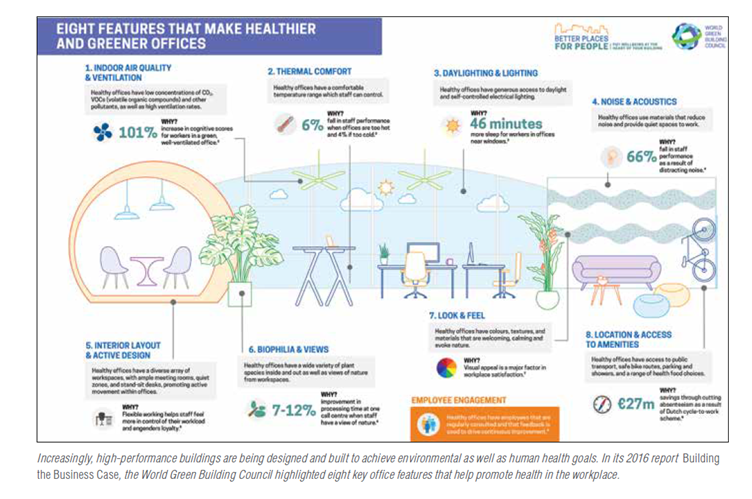
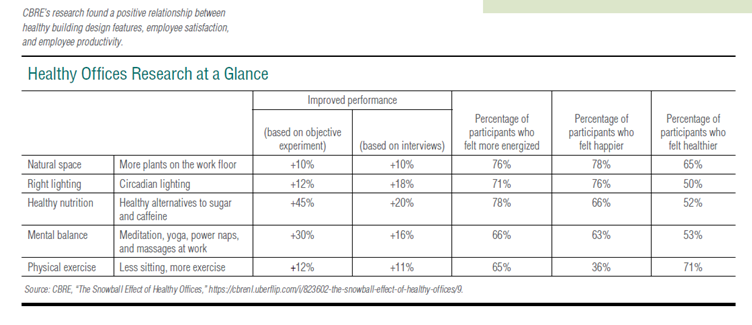
Legislation, policy and standards (UK and global)
Access to Work Mental Health Support Service is available for those who need mental health support whilst in employment. The support can be accessed remotely and is delivered by Remploy Employment Services and Able Futures, who offer individualised workplace support from experienced mental health practitioners. The support and advice is available for up to nine months and can offer coping strategies, a step-by-step support plan, advice on adjustments, and support for employers to enable them to fully understand the person's condition
In March 2021, the Government published the COVID-19 Mental Health and Wellbeing Recovery Action Plan. This acknowledged the important role that employers play in creating workplaces in which employees with health conditions, including mental illnesses, can stay and thrive in work.
The New Social Value Model PPN06/20 makes consideration of Social Value mandatory in central government procurement with a minimum weighting of 10%. It also defines Social Value as relating to five key policy themes and eight policy outcomes, one of which relates to wellbeing: ‘Improve health and wellbeing; improve community integration’. Standardised reporting metrics are provided for each of the criteria; these can be used to develop contract-specific KPIs to ensure consistency and accuracy of reporting.
Tools and Frameworks include:
Best practice, insight, guidance and resources
Good leadership should ensure:
- Regular two-way dialogue with staff, including occupancy studies to optimise working conditions, productivity and wellbeing
- The organisation understands its sickness and turnover rates and targets its improvement
- Board members promote and participate in an initiative calendar, and recognised standards are utilised to frame improvements
- Wellbeing engagement with staff and taking learnings to clients to enhance service offerings.
Best practice in managing wellbeing should include:
- An occupational health and wellbeing strategy
- A safe and healthy working environment: this improves wellbeing, retention, engagement, productivity and satisfaction, and reduces work-related ill health
- KPI scorecard (including lost time injury data)
- Access to services such as mental health first aiders and training, counselling support, health monitoring (pre and during work), musculoskeletal physio services, disability assessment/occupational therapy, and vaccinations
- Using absence data to build the health and wellbeing programme
- Wellbeing working group
UN Sustainable Development Goals
Wellbeing is intrinsic to a number of the 169 targets described in the United Nations Sustainable Development Goals (UN SDGs), including:
- Goal 3: Good health and wellbeing
- Goal 8: Decent work and economic growth
- Goal 9: Industry, innovation and infrastructure
Events, useful links and further reading
IWFM webinar: ‘Extinguishing burnout’ with Vicky O’Farrell
IWFM webinar: ‘Leading for resilience and resourcefulness post COVID-19’ with Marcus Child
Resource: In pursuit of the ‘Holy Grail’ – Determining the Return on Workplace Investment (ROWI)
Resource: Sustainability Survey 2022 - wellbeing
Guidance Note: Healthy Buildings
Equity, diversity and inclusion
We live in a diverse world where people with certain characteristics can often experience invisible barriers which prevent them from or hinder them in accessing and progressing within a variety of environments, such as work. It is therefore critical that organisations implement meaningful long-term EDI plans with measurable KPIs to ensure true equality in how people engage with them. As well as simply being the right thing to do and helping to fill the FM skills gap, the plurality of thought gained from diverse perspectives will enable future innovations and vital adaptations, thus supporting long-term business success. In short, implementing effective EDI policies is simply good business.
IWFM is committed to placing equity, diversity and inclusion (EDI) at the heart of our organisation, governance, membership and profession. We seek to create a community in which all people feel included, valued, supported and that they belong. Our ambition is to foster and support improved EDI practices throughout the workplace and facilities management profession and industry to achieve better outcomes for all. Morally and socially, we believe that this is the right thing to do.
We have created a Focus Group to help us shape and articulate our position and approach on EDI and have published a Public Statement outlining our commitment to this initiative, including how we will collect, analyse and use data to help us understand and break down barriers. Find out more on our EDI page.
Research and insight
Over the years, we have produced a wealth of sustainability-themed content and our Sustainability Surveys have formed the basis of this work. Please find below reports on past Surveys, as well as discussion papers, webinars and infographics based on the findings.
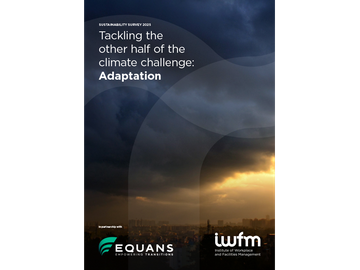
Sustainability Survey Report 2025
The 2025 IWFM Sustainability Report is another landmark publication in the facilities ...
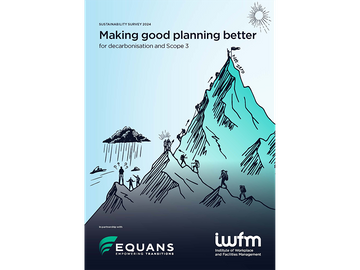
Sustainability Survey Report 2024
IWFM is proud to release the Sustainability Survey Report 2024. The survey results con...
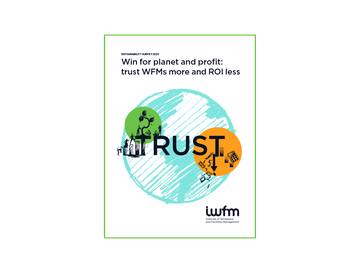
Sustainability Survey 2023
IWFM is proud to release the Sustainability Survey Report 2023, based on the insight o...
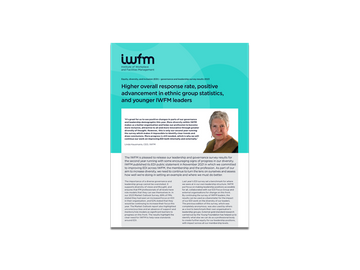
Equity, diversity, and inclusion (EDI) 2023 governance and leadership survey findings
The IWFM is pleased to release our leadership and governance survey results for the se...
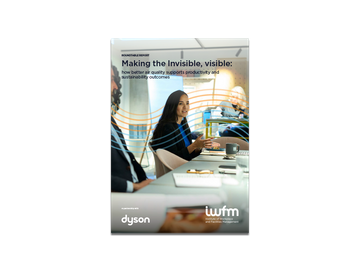
Making the Invisible, visible: how better air quality supports productivity and sustainability outcomes
Since the pandemic, indoor air quality has come to the fore of the public’s mind, yet ...
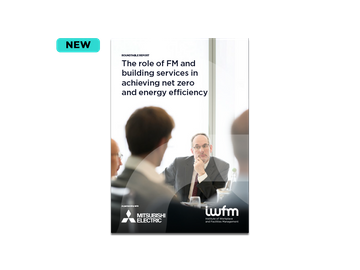
The role of FM and building services in achieving net zero and energy efficiency
Developed in partnership with Mitsubishi Electric, this report offers expert insights ...

Climate adaptation and supply chains: Insights from the IWFM Sustainability Survey 2025
Navigating Turbulent Times webinar series. Hosted by Andrew Gladstone-Heighton ...

The journey towards net zero: actionable insights from the IWFM 2024 Sustainability Survey
Navigating Turbulent Times webinar series. Hosted by Sofie Hooper (host): Head ...

How to build business cases for sustainable success in partnership with Equans
Navigating Turbulent Times webinar series. Hosted by Sofie Hooper (host): Head ...
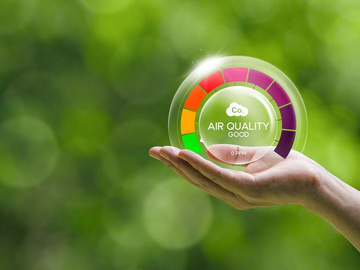
Optimising air quality, a workplace and facilities management priority in partnership with Equans
Navigating Turbulent Times webinar series. Hosted by Sofie Hooper (host): Head ...
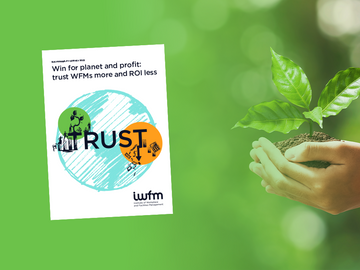
Sustainability survey report 2023 findings
This webinar provides an overview of our Sustainability Survey Report 2023, which focu...

‘Net zero: The importance of communication and collaboration in decarbonising your building’ in partnership with Mitsubishi Electric
Episode 97 of our Navigating Turbulent Times webinar series.
...
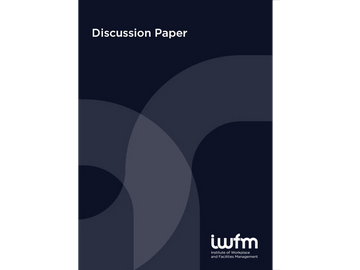
Social value in FM
Since 2015, BIFM’s annual sustainability surveys have identified a move away from the ...

Mind the pay gap the living wage and zero hours
Perhaps counter-intuitively, the media’s fixation on the misuse of zero-hours contract...

Exploring zero waste to landfill
The FM Leaders Forum provides a valuable opportunity for leaders in the sector, both p...

Serving up FM the catering challenge
The pros and cons of catering as a single service or as part of a TFM/bundled solution...
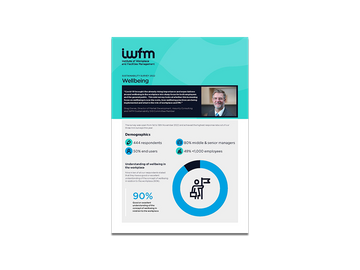
Sustainability survey 2022 - wellbeing
'Covid-19 brought the already rising importance and expectations around wellbeing in t...

Sustainability survey 2022 - Circular economy
More and more organisations are setting net zero targets and these are not going to be...
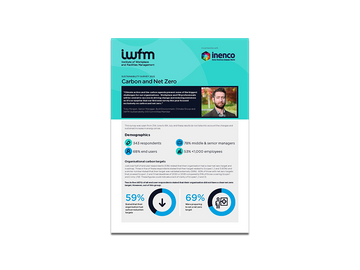
Sustainability survey 2022 - Carbon and Net Zero
Climate action and the carbon agenda present some of the biggest challenges for our or...
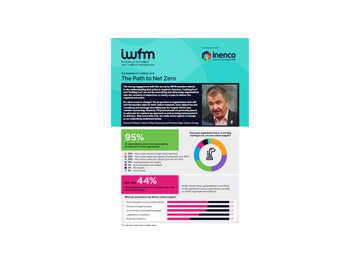
Sustainability survey 2021 the path to net zero
'The strong engagement with this survey by IWFM members attests to the understanding t...

Sustainability survey 2020 the impact of social value
'Social value has been a moving target this year, particularly due to COVID-19. Many b...
Guidance
For many years, sustainability has influenced FMs’ approaches to their work. Please find below a variety of guidance materials to assist you in contributing towards a more sustainable world.

Fire safety management
Ensure you're up to date with the wide-ranging changes in UK fire safety with this in-...
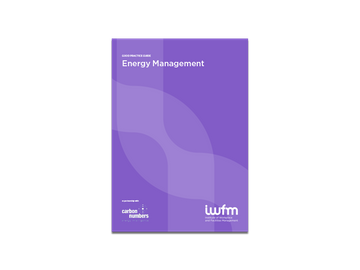
Energy Management
The GPG focusses upon reducing the energy consumed within the building, and the mechan...
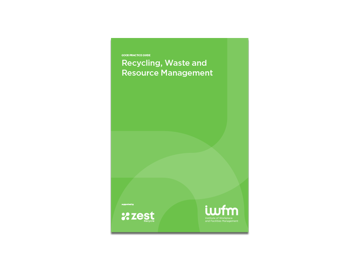
Recycling, Waste and Resource Management
Businesses are increasingly expected to have a positive impact on the environment and ...
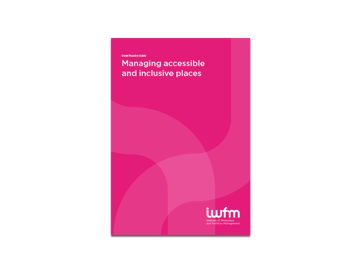
Managing accessible and inclusive places
This good practice guide is aimed at facilities and estate managers and will provide y...
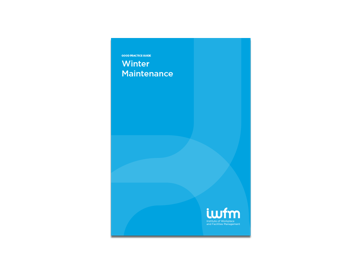
Winter maintenance
Is your property ready for winter? This guide explains how to prepare your property's ...
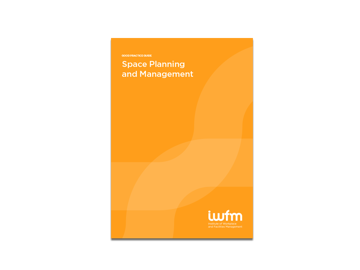
Space planning management
This guide will enhance your understanding of space planning and management for your o...

Building business cases for sustainability
This guidance note enables professionals to translate data insights into impactful pro...
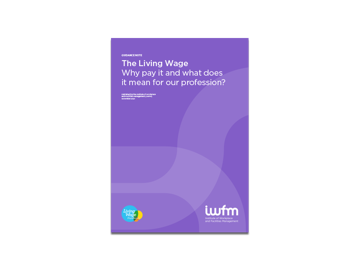
The Living Wage
In this guidance we will, of course, be talking about pay. We know that pay is not the...
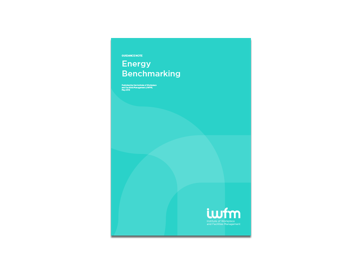
Energy benchmarking
Like other benchmarking and comparison exercises, energy benchmarking is a useful tool...
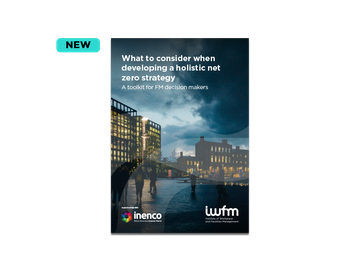
What to consider when developing a holistic net zero strategy
Over recent years IWFM’s sustainability surveys have identified an ever-increasing foc...
Inspiration
Past IWFM Impact Awards winners and nominees
For twenty years, the IWFM Impact Awards (formerly known as the BIFM Awards and more recently the IWFM Awards) has celebrated outstanding best practice and innovation from our influential profession.
Sustainability is just one area of our profession’s influence, but what an important area it is when it’s estimated that the built environment contributes up to 40% of the UK’s carbon emissions.
From climate change to environmental damage, Greta Thunberg to Sir David Attenborough, sustainability has permeated the public consciousness and, inevitably, the business world. In fact, 66% of workplace and facilities managers say sustainability is either extremely or very important (IWFM Sustainability Survey 2018).
As sustainability has grown in prominence, the IWFM Impact Awards has seen some extraordinary award submissions, but here are some of the winners in recent years who stood out from the crowd.
Expand to continue reading
Winner: Innovation in Technology and Systems 2019
Waterless Urinal Technology, WhiffAway Group
Using its expertise as a market leader in waterless urinal technology, biological solutions and closed systems, WhiffAway developed and installed the world’s first fully connected smart washroom technology.
Their system reduces water use, saves cost – through reduced maintenance – can be retro-fitted, and prevents blockages. A non-return valve housing for its systems also stops bacteria growth and helps eradicate bad odours.
WhiffAway’s waterless urinal technology has saved its clients an estimated 750,000,000 cubic meters of water, £1.9 billion in costs and 14.7 million kilos in carbon. The system is non-hazardous and all cleaning materials are environmentally friendly.
This initiative makes a major, measurable contribution to environmental sustainability, while improving the workplace experience.
Impact on the Environment Award 2019
Project Ceres Plastics Reduction, ISS with a Big Four professional services firm
In response to the global plastics pollution problem and feedback from staff, a ‘Big Four’ professional services firm joined forces with ISS in 2018 to radically reduce plastic consumption across their twenty-three UK offices.
The ‘Project Ceres’ team was founded upon the principles of two initiatives: ISS’s Corporate Social Responsibility Strategy, ThinkForward@ISS, which commits to reducing carbon emissions and waste, and procuring sustainable products and services; and the Big Four firm’s UK Environmental Policy, which commits to ‘the prevention of pollution’ and ‘purchasing environmentally sustainable products’.
The Big Four firm no longer stocks branded plastic bags and now uses cardboard boxes for branded sweets and business cards as well as using stationary such as 100 per cent recycled fire padded envelopes instead of bubble wrap.
Through a variety of measures, such as no longer stocking branded plastic bags and using stationary created from recycled materials, the project managed to cut 57 tonnes of single use plastic per year, delivering a 91% reduction in just eight months.
Winner: Innovation in Products and Services 2018
Sustainability innovations, Innovation Gateway
When it comes to innovation, managing the costs and risks are challenging for stretched teams: you don’t know what you don’t know. The Innovation Gateway partnership approach tackles this problem head on.
Using a ‘Power of Many’ philosophy, the partners collaborate to adopt breakthrough technologies and transform the performance of their buildings, at scale.
They share experience and best practice across diverse industries, as well as performance data from pilots, and together source the innovations they need to address complex challenges, including sustainability targets.
By working together, they have collectively accrued estimated savings of £millions, plus substantial reductions in energy and water from innovations sourced and piloted through the Innovation Gateway.
Partners include Tesco, Heathrow, RBS, Kingfisher, Unite Students, University of Edinburgh and Nottingham City Council.
An example in practice is when RBS trialled an additive called Endotherm to make its wet heating systems more efficient. After tracking 10-15% energy reductions, RBS shared the information with the alliance, after which Heathrow implemented the same innovations with the result of 11-16% savings in three months.
Winner: Impact on the Environment Award 2018
Carbon Management Programme, University of Oxford
The Carbon Management Programme delivers the University’s Carbon Management Strategy, which aims to make significant cuts to their carbon emissions while engaging staff and students and sharing data and lessons learned more widely.
The degree of stakeholder engagement sets it apart, and the projects within are designed to empower users by transferring skills and knowledge.
The University set an ambitious target to reduce scope one and scope two carbon emissions by 33% from 2005/06 levels by the end of 2020. By 2018, it had already saved an estimated 6,256 tonnes of CO2 and £1.5m of annual energy costs. Over 205 completed projects include solar photovoltaic systems, lighting upgrades, building management system optimization, building system upgrades, and roof insulation.
This programme benefits the whole University as it reduces both carbon taxes and energy costs, which come out of departmental budgets. The projects improve user experience and contribute towards funding applications where laboratories can demonstrate high-level environmental control. Lessons learned are also communicated back to the University’s capital projects team, who take them into account when designing new buildings.
Winner: Impact on the Environment Award 2017
Caring for the Environment, Landsec
Landsec’s vision was to become the environmental leader in the listed real-estate sector and this project showed that care for the environment is about more than just energy and waste management.
The company invested in innovative technologies and site-specific energy reduction assessments with the help of partners like NG Bailey for its ‘Care for the Environment’ initiative, which helped to save over 10% in energy use and saved customers over £880,000 in energy bills. Landsec also achieved goals of 70% recycling buildings by 2016 and this is increasing every year.
The team also formed strategic partnerships and developed a mandatory ‘Sustainability Matters’ training course with online, role-specific and face-to-face training for employees, to ensure employee engagement and participation across its initiatives.
Winner: Impact on Sustainability 2016
‘Food Waste, Costing the Earth’, BaxterStorey
BaxterStorey started its crusade on catering business food waste in the form of food spoilage, plate waste and preparation waste. Its reasons to use fresh, locally sourced produce stems from a belief that it would not only deliver the highest quality catering offering, but also help to sustain the local supply chain, and reduce both energy use and environmental impact.
A proprietary online operational accounting package called ‘Evolution’ captures the results of the ‘Food Waste, Costing the Earth’ project. Collecting all waste for recycling or macerating - from food production, unsold leftover food, customer leftovers, and out-of-date stock - weighing each sector, and recording weight data became the strategy.
The initiative went live in July 2014 and now 600 locations report data weekly. The results are:
- 35% reduction in food waste since the project started
- significant savings in food and drink purchases
- reduced environmental impact equal to 16,000 tonnes of CO2 – the equivalent of taking more than 4,000 cars off the road for a year.
United Nations Sustainable Development Goals
In 2015, all United Nations (UN) Member States adopted the UN’s 2030 Agenda for Sustainable Development, which provides ‘a shared blueprint for peace and prosperity for people and the planet, now and into the future’. Central to this blueprint are the 17 Sustainable Development Goals (SDGs): an urgent call for all countries to help create a sustainable world through their national and regional governments enacting local policies that tackle a variety of deprivations and inequalities.
As the UN puts it, the SDGs ‘recognise that ending poverty and other deprivations must go hand-in-hand with strategies that improve health and education, reduce inequality, and spur economic growth, all while tackling climate change and working to preserve our oceans and forests’.
Ultimately, the SDGs are also for consumers, businesses, societies and non-governmental organisations to embrace and change the way we do things to support the development of these 17 goals.
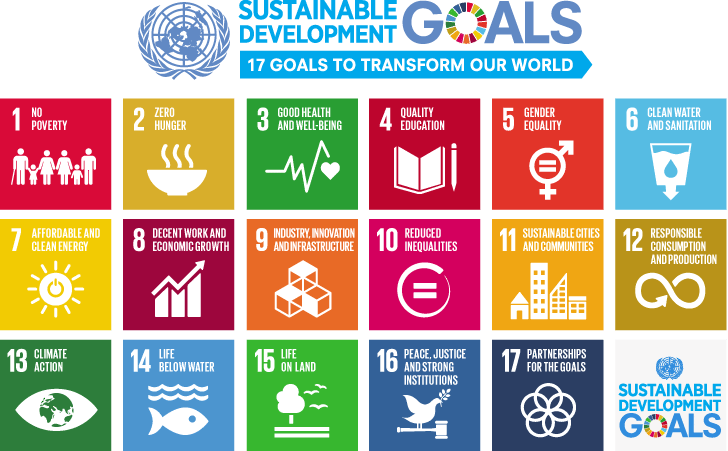
You can watch a summary of the SDGs is in this short video:
Delivering the 17 SDGs is a complex and ambitious task. This Ted Talk helps clarify the 17 SDGs and how we can get there:
News
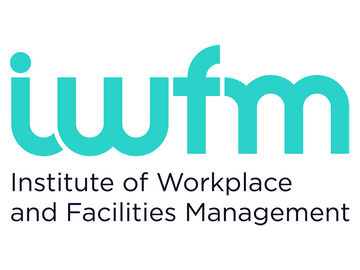
IWFM champions sustainability and collaboration at EuroFM 2025
Members of IWFM’s senior team attended this year’s EuroFM Conference & Research Sympos...
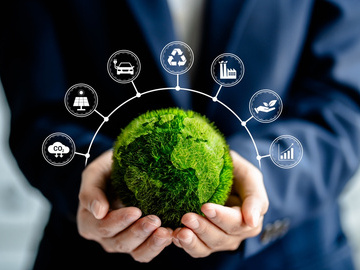
Sustainable facilities management - Visit the IWFM Sustainability hub
As workplace and facilities managers – sustainability is now front-of-mind in nearly a...

Out now: the 2025 IWFM Sustainability report
The 2025 IWFM Sustainability Report is another landmark publication in the facilities ...

World Environment Day 2025. How WFM should be spearheading the workplace sustainability agenda
Workplace and facilities managers (WFMs) are on the frontline as organisations everywh...
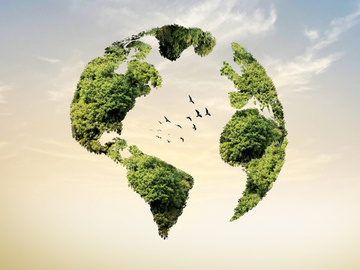
The 2025 Sustainability Survey is live – we need your voice
The IWFM Sustainability Survey is a landmark in the UK’s workplace and facilities mana...

Coming soon: the 2025 Sustainability Survey, in partnership with Equans UK & Ireland
To equip workplace and facilities management (WFM) professionals with the tools needed...
Other resources
BSI: The little book of net zero for small businesses
Canadian Geographic (video): Global energy demand
TED (video): Christiana Figueres on how we can solve the climate crisis
TED (video): Johan RockstroÌm on letting the environment guide our development
TED (video): Pen Hadow on the role of business in ecological research
TED (video): Tony Juniper discusses loss of biodiversity and the impact on commercial businesses
The Royal Society (video): Climate change in 60 seconds
UN Environment Programme (video): Why do we need to change our food system?
University of Plymouth (video): What is water security

